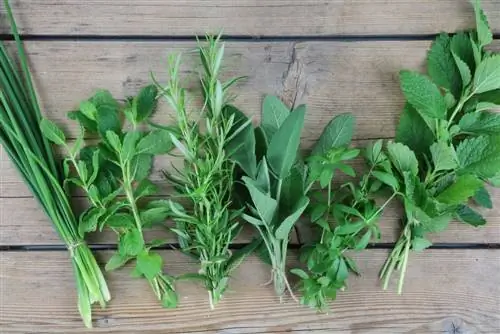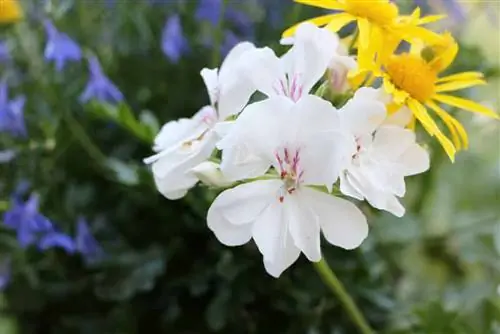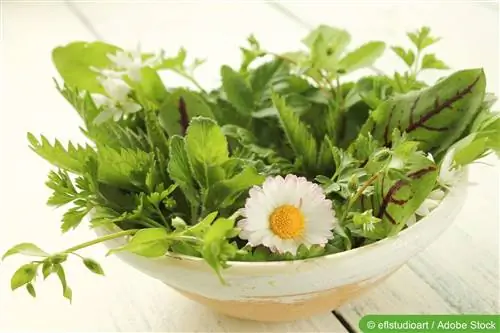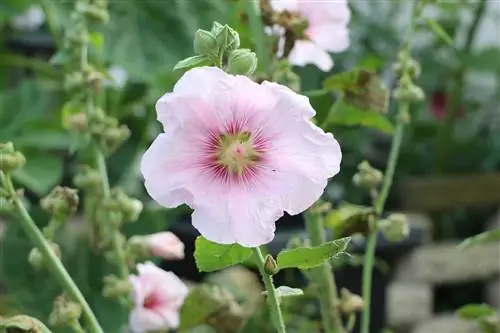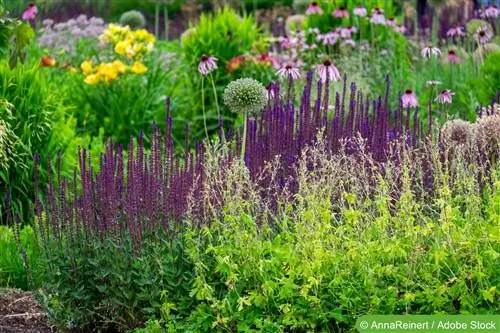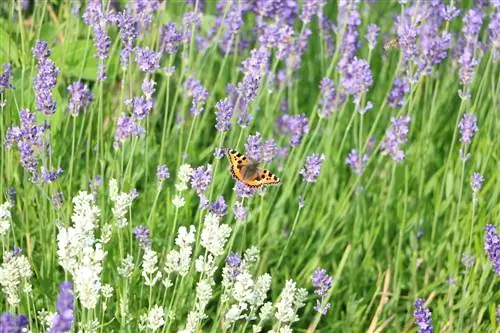- Author admin [email protected].
- Public 2023-12-17 03:39.
- Last modified 2025-06-01 06:48.
Sometimes spicy, sometimes sweet - and always tasty. Aromatic herbs have become an integral part of the kitchen. Chives, parsley, etc. taste particularly delicious when they are home-grown. But when it comes to the cultivation period, some hobby gardeners are uncertain: should the plant in question be cultivated as an annual or biennial. And: Which varieties are really worthwhile?
Definition of “annual”
The terms “annual”, “biennial” and “perennial” are used frequently and very naturally in connection with herbs; It is difficult to make a clear distinction between the individual variants. True annual herbs are very rare; These are varieties that reproduce only once during a continuous growing season and then die. This includes, for example, the “Canary nasturtium”, which is rarely grown in our latitudes.
The herbs known as classic annuals, which are known in our latitudes, are usually only grown in this way - for example because they originally come from warmer countries and cannot overwinter here.
Note:
For many herbs that are grown as annuals, it is worth trying to overwinter them indoors! They then become biennial or perennial herbs.
Annual herbs
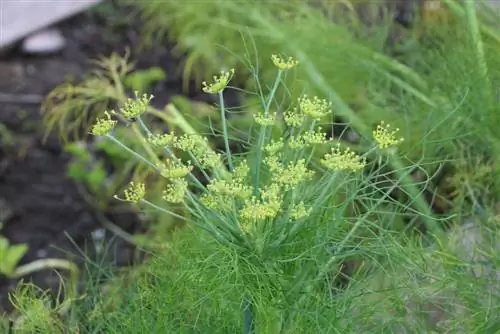
Many herbs are only cultivated for one summer in our latitudes. These include, for example, popular culinary herbs that can be grown both in the outdoor bed and in the kitchen on the windowsill. Available for one-year cultivation are:
- Savory (leaves)
- Dill (fruits and leaf tips)
- Chervil (leaves)
- Coriander (fruits)
Dill and chervil
- annual herbs for partial shade -
The popular culinary herbs dill and chervil are often planted together in a herb garden because they have similar growing conditions:
- Sowing from April (be careful with subsequent frosts!)
- Cultivation possible in partially shaded location
- Nutritious and humus-rich compost soil is used as the optimal substrate
- The soil should be protected from compaction
- The harvest takes place in summer
While dill with its fresh, mildly spicy aroma is mainly used for fish dishes, the slightly sweet, anise-like taste of chervil is particularly popular in egg dishes or light sauces. If you want to expand your herb bed, you can place the classic culinary herbs parsley and chives in the same location - they also grow in partial shade.
Savory and coriander
- Annual Sunbathers -
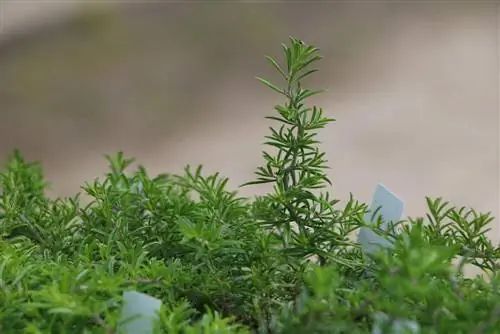
Savory and coriander can be planted in the same location as both have similar growing conditions:
- Sowing from mid-April
- Cultivation in humus-rich and permeable soil
- A sunny location is preferred
- The harvest takes place from early summer
While savory also copes well with poor soil, the corner of the bed in which coriander is sown should be additionally enriched with nutrients.
The use of coriander is varied; Potato dishes taste particularly good when they are refined with the spice; But Christmas cookies also get a special flavor with coriander. Savory, on the other hand, is often used to refine spicy stews as well as vegetable and meat dishes due to its sharp and slightly peppery taste.
Tip:
Savory can also be grown very well in the immediate vicinity of basil!
Annual herbs that are also cultivated perennially
In addition to the classic herbs, whose growth period only lasts one year, there are also those whose perennial varieties are also available. These mainly include basil and celery.
Basil
- the classic par excellence -
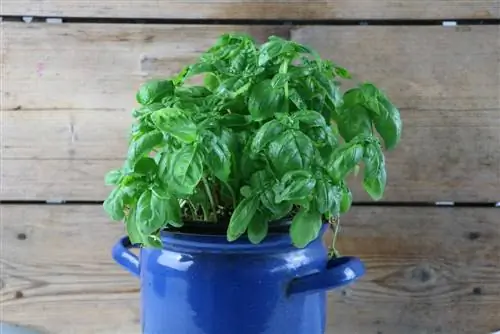
Basil is one of the classics of Italian cuisine and is primarily used in various pizza and pasta dishes. All types of basil grow quickly - especially when ideal location conditions are provided:
- Sowing only takes place from April (optimal lighting conditions)
- The plant thrives on nutrient-rich substrate
- The location is chosen bright and warm
- Harvesting can begin in summer
Note:
The annual basil is not hardy.
The following varieties are particularly popular:
- Genovese basil: the most famous type, aromatic and large-leaved
- Basil “Fino Verde”: small leaves, ideal for making pesto
- Basil “Fine Green”: fine-leaved and suitable for sweet dishes
- Basil “Toscano”: large-leaved with a fine mint flavor
- Neapolitan basil: large, light leaves with a peppery aroma
- Basil “Cardinal”: decorative red flowers
In addition, different types of bush basil are available, which usually produce slightly smaller leaves, for example Turkish bush basil (with a particularly sweet scent) or real Provence basil. However, basil is also occasionally available as a perennial plant. The following varieties can be overwintered:
- Wild basil: very robust, slightly smoky note
- African tree basil: spicy, clove-like
- Cypriot bush basil: large plant with late blooming
Celery
- also as soup vegetables -
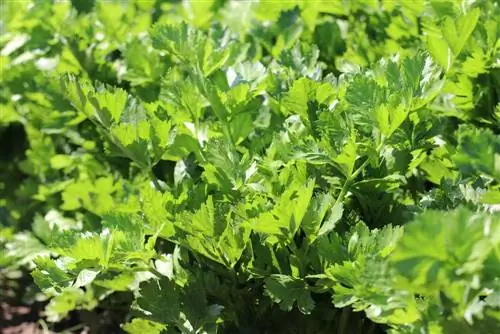
If you want to prepare a hearty vegetable soup, you need celery, an herb that is easy to grow, as an important basic ingredient. It is a s alt-tolerant plant; Cultivation works best if the following conditions are met:
- Sowing takes place in March
- Substrate should be nutrient-rich
- Cultivation in a sunny location or in partial shade
- Regular watering is necessary
- Substrate should always be slightly moist
- Harvest possible from summer to autumn
Celery is not necessarily an annual herb, as various varieties can also be cultivated as biennials or perennials. The most popular varieties include:
- the “curled cut celery”: visually similar to parsley, annual and biennial
- the “Chinese celery”: particularly fast-growing vegetable celery, annual and biennial
- the “Korean celery”: particularly hearty with a slightly earthy note, persistent
Biennial herbs
The classic biennial herbs require an interruption in the growing season for successful cultivation; This can be triggered either by dryness or by cold. Flowers will only form later if this condition is met. The corresponding plants usually bloom in the spring after sowing, while the seeds mature in the summer months.
Biennial herbs include:
- Fennel (fruits)
- Cumin (seeds)
- Parsley (leaves)
- Leek (leaves)
Fennel and caraway
- classic medicinal herbs -
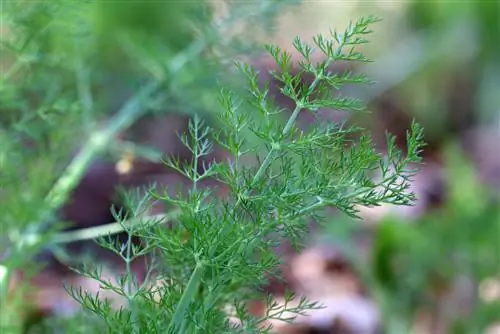
Fennel mainly grows as a perennial, but is grown as an annual herb and as a biennial for seed production. However, in our latitudes, cultivation is usually annual - especially for certain early varieties. These include the annual fennel “Magnafena,” which is designed to provide edible portions very early in the year; Sprouts taste good in spring, herbs and seeds during the year. If you want to benefit primarily from the seed production of fennel, you will often grow fennel as a biennial.
If you want to have some of the delicious and he althy herb for at least two years, you can choose between different varieties:
- Spiced fennel classic as a tea for back pain
- Spiced fennel “Berfena”: compact cultivation with high oil content and intense aroma
- Bronze fennel: small form with decorative, red-brown foliage
When growing fennel, the following aspects must be taken into account:
- Sowing only takes place from June, as fennel tends to sprout
- Use of humus-rich and permeable garden soil that is lightly fertilized
- A warm and sunny place is chosen as the location
- You should water when it is dry
- Lettuce plants have proven to be ideal partners in mixed cultivation
- Harvest takes place in autumn
Caraway is also one of the classic medicinal herbs and is also used to season spicy dishes; The spice is particularly tasty in oriental dishes. Caraway is available in both annual and biennial varieties:
- The two-year version is best sown in late summer
- Caraway is cultivated in deep and lean substrate
- Make sure the soil is always moist
- Caraway thrives in a sunny location and moderately in partial shade
- The seeds are harvested when they have reached their full size.
Note:
Transplanting is generally not tolerated well!
parsley
- Classic culinary herb -
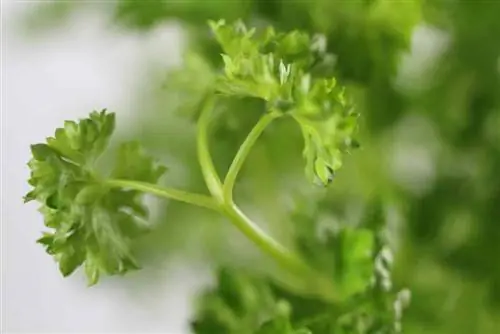
Parsley is usually sold as an annual culinary herb; In fact, it is a plant that is intended for overwintering and, depending on the variety, grows as a biennial or even perennial. However, cultivation requires some sensitivity; The following aspects must be taken into account:
- Sowing is best done in August on pre-fertilized soil
- Cultivation then takes place in a cool, shady location.
- A harvest is then possible the following year from spring
Tip:
If you leave the parsley roots where they are in the fall, you can harvest them again the following season, starting in late spring.
The following varieties provide different taste impressions:
- Parsley “Mosskrause”: biennial, strong curly
- Italian parsley: perennial, smooth-leaved
- Japanese parsley: perennial, tastes of celery and angelica
Leek
- essential in salad dressing -
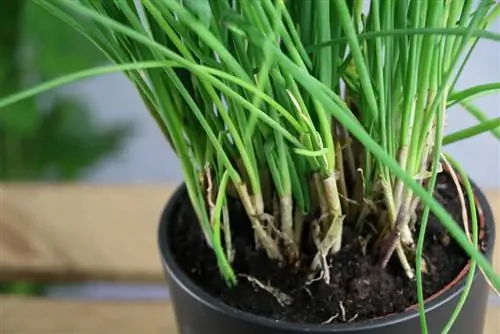
One of the classics among the two-year-old culinary herbs is the garden leek, which can reach a height of up to 80cm. In contrast to the wild form, it does not form a bulb. The plant thrives best when the following cultivation conditions (summer garlic) are provided:
- Sowing takes place in spring
- The soil should be rich in nutrients
- The ideal location is a brighter and sunnier place
- A constant supply of water is important for a bountiful harvest
- The harvest takes place in summer
The most popular leek varieties (summer leeks) include:
- Bavaria: early leek, fast growing, great heat
- Megaton: long-stemmed, very productive
- Elephant: particularly thick shafts, does not tolerate frost
- Formerly giant: fast growing, high yields, particularly juicy
In addition to the classic two-year-old garden leek varieties, there are increasingly exotic varieties on the market that can also be cultivated for longer than two years. These include, for example:
- Chives “Profusion”: decorative and edible flowers
- Leek slice pods: delicious and robust wild herb that can even be harvested in winter
- Onion garlic: fine onion aroma with a hint of garlic
No matter which variant the hobby gardener chooses: with the right seasoning, every dish becomes a culinary delight

